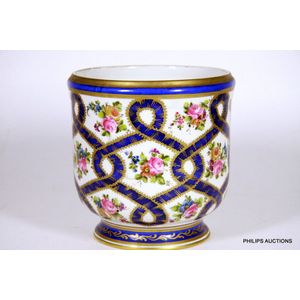Chinese Tortoiseshell Cricket Cage, 1930s/40s
You must be a subscriber, and be logged in to view price and dealer details.
Subscribe Now to view actual auction price for this item
When you subscribe, you have the option of setting the currency in which to display prices to $Au, $US, $NZ or Stg.
- Incised - A record of a name, date or inscription, or a decoration scratched into a surface, usually of a glass or ceramic item with a blunt instrument to make a coarse indentation. Compare with engraving where the surface is cut with a sharp instrument such as a metal needle or rotating tool to achieve a fine indentation.
- Tortoiseshell - Tortoiseshell is a translucent material that comes from the horny carapace of a certain types of turtles, including the hawksbill turtle. It is often therefore mounted on a colour underground - often red - or inlaid with gold or silver thread, as seen in Boulle furniture.
The texture and colour nuances of the material are extremely important. Heated tortoiseshell can easily be formed into various shapes. Like other natural materials, tortoiseshell becomes more beautiful with use. In a time before plastic, tortoiseshell was widely used for small objects such as combs and powder compacts.
In 1973, the trade of tortoiseshell worldwide was banned under CITES (The Convention on International Trade in Endangered Species). Prior to importing or exporting items containing tortoiseshell a CITES permit must be obtained. Tortoiseshell items cannot be traded on Ebay.
"Faux tortoiseshell", another case of man initiating nature, is made from old-style plastics such as celluloid and cellulos and is coloured with red, yellow and brown spots to imitate the genuine article. It is commonly used in glasses frames, musical instruments and costume jewellery. - Circa - A Latin term meaning 'about', often used in the antique trade to give an approximate date for the piece, usually considered to be five years on either side of the circa year. Thus, circa 1900 means the piece was made about 1900, probably between 1895 and 1905. The expression is sometimes abbreviated to c.1900.
This item has been included into following indexes:
Visually similar items

A Continental porcelain perfume bottle, 19th century, a delightful cylindrical bottle with a hinged cap, handpainted with a scene of a maiden in a bucolic setting, the silver mounts and interior with a rose gilt wash, and with original glass stopper. Heigh

A Satsuma earthenware vase, square section with chamfered corners and decorated with panels of floral and exterior scenes. Height 25 cm. Provenance: The Flower Family Collection. (With handwritten label to base.)

A Chinese porcelain brush pot, decorated in polychrome enamels with three dragons on a cloudy ground, cylindrical shape, four character mark under the base. Height 12 cm.

A Sevres style porcelain jardiniere, early 20th century, the bell shaped jardiniere with parcel gilt decoration of knotted ultramarine and gold ribbons dotted with brightly coloured floral posies, bearing pseudo painted Sevres marks with a gold 'Moustache'
